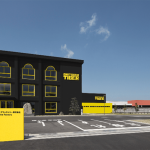For the first time in several quarters, GoPro avoided a huge surprise disappointment for the investment community. The company reported a narrower than expected first quarter loss, double-digit top-line growth in the period, and provided second-quarter guidance that was better than Wall Street expected.
But shares still slid xx to xx on Friday after the company reported shipments fell to 730,000 units in the first quarter, down from Wall Street’s target of 805,000.
Shares of GoPro closed Friday at $8.25, down 69 cents, or 7.7 percent, on the day. The stock’s 52-week range is from $7.14 to $17.68.
GoPro reported sales in the first quarter rose 19.1 percent to $218.6 million from $183.5 million. Sales were helped by the return of the company’s Karma drone, which was recalled in the fall due to a battery issue. Sales of the drone, which costs $799 by itself or $1,099 when bundled with a GoPro Hero 5, resumed in February.
The net loss grew slightly to $111.2 million, or 78 cents a share, from $107.5 million, or also 78 cents a share. On an adjusted basis excluding non-recurring items, the loss was cut to $60.3 million, or 44 cents a share, from $96.8 million, or 63 cents, in the same period a year ago. The results were a penny better than Wall Street’s consensus target of 45 cents.
On an adjusted basis, EBITDA showed a loss of $45.7 million against a loss of 86.8 million a year ago.
GoPro had a rocky start to the year. Its fourth-quarter and full-year numbers fell well below analyst expectations, causing its stock to fall 10 percent after their release.
It also announced layoffs in March that would lead in the loss of 270 jobs, on top of two previous rounds of cuts in January and November. The layoffs helped reduce its operating expenses by $50 million.
On a conference call, GoPro CEO Nick Woodman told analysts that the company is “more efficient than just six months ago” and that GoPro has “dramatically reduced spending without comprising our product roadmap.”
GoPro has also moved much of its software development as well as customer-service departments to less-expensive, streamlined its supply chain, and changed how it packages and ships its products, GoPro chief operating officer CJ Prober said on the call.
These changes are “a major step in GoPro’s turnaround,” explained Woodman. He again vowed that the company would be profitable excluding certain costs by the end of 2017.
Looking ahead, GoPro announced plans for the release of a spherical video camera called the Fusion in the fall.
For the second quarter, estimating sales would land between $260 million and $280 million. Wall Street’s consensus estimate had been $243 million. Adjusted EBITDA Is expected to range from a loss of $20 million to a loss of $10 million.
Photo courtesy GoPro
















